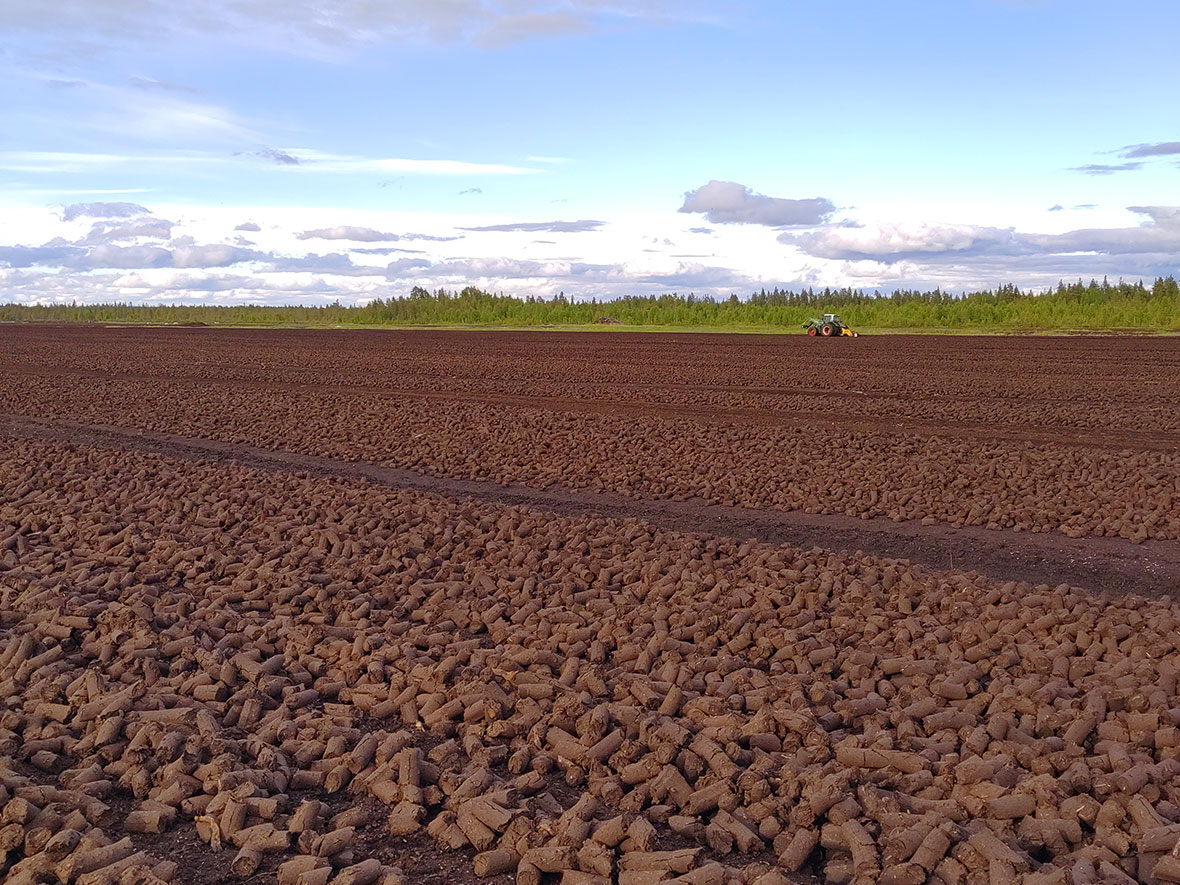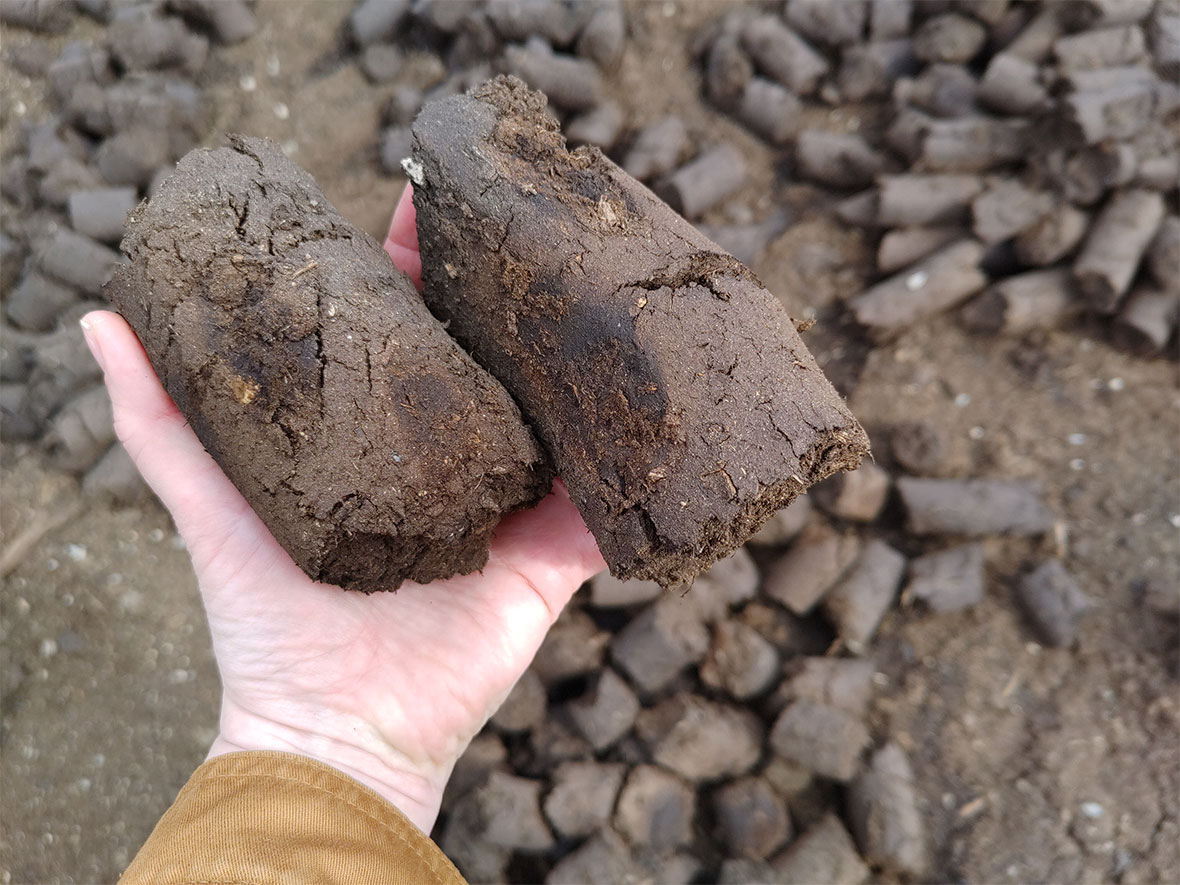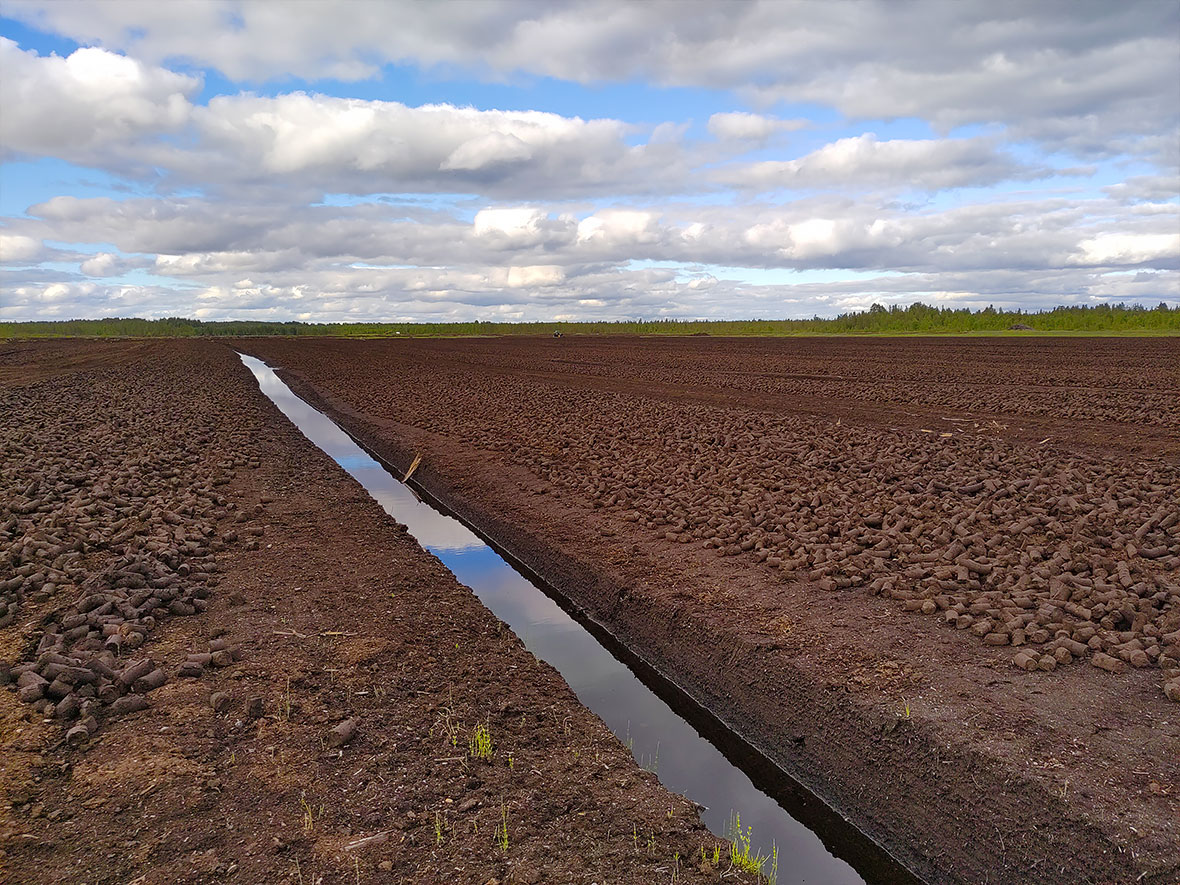NPE’s visiting researcher Hanna Lempinen is currently doing research focusing on the just transition of the Finnish peat industry. She did some fieldwork at a peat bog in Northern Finland in this blog post she shares some of her first thoughts.

Peat bog in northern Finland.
Since 2019, Finland has been rapidly decreasing the traditionally important role that peat has had in its energy palette. As a part of the transition process, those deriving their livelihood from peat harvesting and related activities were promised a just transition. I have spent the last two-ish years working on two different research projects that have investigated how the transition policies have been experienced those working with peat.
During these research projects, I have not only found out that those deriving their livelihood from peat are profoundly dissatisfied and disappointed with the ways in which the peat transition has been handled. In addition, I have also observed that those working with peat often talk about their livelihood in very special terms: instead of referring to peat harvesting as a source of employment or income, they tend to frame peat harvesting as “a way of life”, “a hobby” or even “a family member”. For many, the personal meanings intertwined with peat exceeded its economic importance and the prospect of having to give up peat harvesting was experienced as a loss that no amount of money in the world could compensate.
With the aim to somehow begin to understand this special relationship, I spent a week at a peat bog in Finnish Lapland observing and participating in the daily activities of those working there. Days were long, from early morning until late evening; there were mosquitoes and fine brown dust everywhere; the air smelled or wet mud and marsh tea; you could hear the wind, the birds and the machines; the peat bog felt oddly wobbly under my feet. When walking around the marshlands that surrounded the industrial bog, my host – not a young person anymore – was walking faster than what I was able to keep up with, always knowing exactly where to step. At the bog, he could hear when the harvested peat chunks were ready for the next work phase just by throwing one and listening to what it sounds like when it lands.
The machine harvesting the peat was crawling back and forth from one end of the bog to another with the sluggish speed of one kilometer per hour. I asked two of the men who were driving the machines if they get bored during their (minimum!) 12-hour shifts. Neither one of them seemed to understand my question at all. During one truck ride we were talking about holidays and travels with the entrepreneur who was hosting me. “Why would I need to go anywhere from here?”, he asked. He had lived in this same place all of his life.
During my last evening we were drinking wine and barbecuing fish in a small hut that was sheltering us from the billions of mosquitoes preying on us behind the windows. I asked my host if he would – in the many ways uncertain situation that those working with peat are now faced with – be willing to give up his work with peat if all of his financial losses would be compensated in full for the rest of his life. He did not hesitate for a moment, just said “no”.
Text and photos: Hanna Lempinen.
The field visit was funded by Maj and Tor Nessling Foundation project grant 202000005.

Harvested peat.

Peat bog in northern Finland.